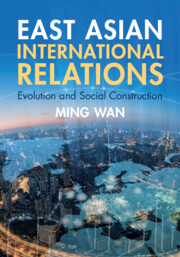Book contents
- East Asian International Relations
- East Asian International Relations
- Copyright page
- Dedication
- Contents
- Figures
- Maps
- Tables
- Preface
- Acknowledgments
- Abbreviations
- Part I Introduction and Theory
- Part II Historical Background
- Part III East Asia since 1945
- 5 East Asian Security
- 6 East Asian Growth
- 7 East Asian Money
- 8 East Asian Regionalism
- 9 The U.S.-China Strategic Rivalry
- 10 Democracy versus Autocracy
- References
- Index
5 - East Asian Security
from Part III - East Asia since 1945
Published online by Cambridge University Press: 28 November 2024
- East Asian International Relations
- East Asian International Relations
- Copyright page
- Dedication
- Contents
- Figures
- Maps
- Tables
- Preface
- Acknowledgments
- Abbreviations
- Part I Introduction and Theory
- Part II Historical Background
- Part III East Asia since 1945
- 5 East Asian Security
- 6 East Asian Growth
- 7 East Asian Money
- 8 East Asian Regionalism
- 9 The U.S.-China Strategic Rivalry
- 10 Democracy versus Autocracy
- References
- Index
Summary
Chapter 5 analyzes the evolving security structures in East Asia since the end of World War II. What counts as security for the countries in the region and beyond, and the policy choices made accordingly, have made East Asian security the way it is today. Evolution shapes every component of international security, specifically the nation, the nature of politics, and epistemology. Conventional security theories such as the security dilemma and alliance apply to East Asia partly because Western practice and theory have become parts of East Asian practice and theoretical thinking. At the same time, East Asia had a much longer history, and was not a blank canvas for outside influence. The mixture of the old and new explains why East Asian security concepts and practices seem partly familiar and partly strange, which is characteristic of East Asian international relations.
Keywords
- Type
- Chapter
- Information
- East Asian International RelationsEvolution and Social Construction, pp. 125 - 156Publisher: Cambridge University PressPrint publication year: 2024

